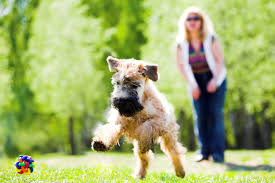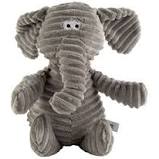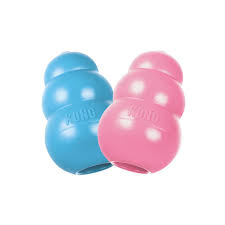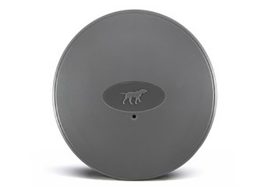How to Stop Your Dog Chewing Furniture
How to stop your dog chewing furniture
Why do dogs chew furniture?
At DogFence we specialize in keeping your dogs (and cats) safe within the garden, however, there may be areas of the house that you want to keep off-limits from your pets? Customers will often ask how can I stop my dog chewing the furniture or going upstairs? Perhaps you want to keep the dog out of a room or away from the rubbish bin. A white sofa and a muddy dog do not always mix well and it’s important to understand what triggers these behaviours to find the right solution to alter the behaviour.
Chewing is a completely normal and natural behaviour in dogs, they will use their mouths to explore the world around them in the same way we use our hands. Chewing will accomplish a number of things for a dog no matter what the age. In young puppies, destructive chewing will generally be a way to relieve pain from any teeth that may be coming through. For older, more mature dogs, it’s nature’s way of keeping jaws strong and teeth clean. Chewing will also combat:
- Boredom
- Mild anxiety
- Frustration
While chewing behaviour is normal, dogs sometimes direct their chewing towards inappropriate items such as your beloved furniture. Dogs need to be taught in a gentle manner what is acceptable to chew and what isn’t.
Need to understand your dog and why they destructive chew
Adult dogs may engage in destructive chewing for any number of reasons. In order to deal with the behaviour, you must first determine why your dog is chewing—and remember, they are not doing it to spite you. Possible reasons for destructive chewing include:
- They weren’t taught, as a puppy, what is okay to chew and what isn’t.
- That they are bored
- That they may suffer from separation anxiety
- That their behaviour is fear-related.
- That they want attention.
Separation Anxiety
Separation anxiety is a condition in which the dog will exhibit stress and behavioural problems when separated from their owner. When a dog is experiencing separation anxiety they try and find ways to relieve the stress they are experiencing, such as chewing on many different household items they can get their paws on! They will also display other signs, such as:
- Whining
- Barking
- Pacing back and forth
- Restlessness
- Urination
- Defecation
Fabric Sucking
Some dogs will tend to lick, suck and chew at certain fabrics. Experts believe that this behaviuoral problem stems from the puppy being weaned too early (before seven or eight weeks). If a dog’s fabric sucking behaviour has been ongoing for a lengthy period of time then it will be difficult to distract him when he attempts to engage in it, this means that the behavioural problem has become compulsive. If you think this behaviour has become compulsive it may be worth contacting a balanced dog trainer for assistance. The IACP have a list of trainers and should be able to put you in touch with a trainer in your area.
Hunger
A dog on a calorie-restricted diet might chew and destroy objects in an attempt to find additional sources of nutrition. Dogs usually direct this kind of chewing toward objects or furniture which may smell like food.
Dog chewing solutions
DogFence Indoor Solutions
At DogFence we offer an indoor product (B.O.B – Battery Operated Boundary) to stop your dog from chewing your favourite rug, sofa or even jumping on the beds! Our indoor system can be moved from room to room and is completely wireless and re-chargeable. The B.O.B can be discreetly placed underneath the objects you don’t want your dog near so its virtually impossible to see, the unit can also be used for all breed of dogs and cats and they can be purchased as an addition to your existing outdoor fence or as a complete indoor solution (Dog Fence Collar Required).
Learn more about our indoor solutions here: https://dogfence.co.uk/indoor-dog-wireless-dog-fence/
Also feel free to read our blog all about our indoor dog fence system: https://dogfence.co.uk/posts/
Puppy Teething
Much like human infants, puppies go through a stage when they lose their baby teeth and experience pain as their adult teeth come through, because of this the intensified chewing phase usually ends by six months of age.
Some solutions for puppies who are teething and tending to chew the furniture, are:
- Giving the puppy ice cubes
- Dog toys that can be frozen
- Frozen wet cloths to chew
Giving the puppy something cold to chew will help relieve and numb the pain from the teeth that are coming through. Gentle guidance can be given to teach the puppy on appropriate and inappropriate things to chew.
Supervise your dog until they learn the house rules.
Keep the dog with you on their leash in the house so they can’t make a mistake out of your sight. Confine them when you’re unable to keep an eye on them. Choose a “safe place” that’s dog-proof, and provide fresh water and “safe” toys.
Give your dog plenty of people-time.
Your dog won’t know how to behave if you don’t teach them alternatives to inappropriate behaviour, and they can’t learn these when they are in the yard by themselves. Be patient with your dog you cant rush them into learning what’s right and wrong as you will confuse them.
Give your dog plenty of physical and mental exercise.
If you do catch your dog chewing on something they shouldn’t, such as the sofa, don’t interrupt them with a loud noise, instead offer them an acceptable chew toy instead and then praise them for taking the chew toy in their mouth.
Your dog may be bored if they are not getting enough physical exercise and as a result of this they will try to find something to amuse themselves or fight the boredom, such as chewing your beloved furniture! The amount of exercise should be based on their age, health and breed characteristics.
Make items unpleasant to your dog.
A spray can be used on items, such as furniture, to prevent your dog from wanting to chew.
Don’t chase your dog
Do not chase your dog! If you chase them you are giving the dog what it wants. Instead call them and wait for them to come to you and give them a treat.
Have realistic expectations.
At some point your dog will inevitably chew up something you value; this is often part of the transition to a new home. Your dog needs time to learn the house rules and you need to remember to take precautions and keep things out of their reach.
Different Toys and chews to give to your dog that is chewing your furniture
Most people tend to get dog toys and chews confused, so here is a list differencing the different toys and chews.
Toys
Dog toys are easily destroyed and are NOT designed to be chewed. The owner should always pick up the toy at the end of a game and put out of the dogs reach, this will therefore save you money because the toys last much longer – you will also avoid the need to take your dog to the vet because of a blockage caused by swallowing toys. Do not leave them for your dog to chew once the game has finished.
Chews
Chews should be given when a dog is settling down for a quiet time, either in your presence or alone. Unlike toys, chews are designed for nibbling and gnawing and are essential if you want a dog to chew acceptable items instead of your furniture. Examples of chews include rask, chew stick, dental rawhide, pressed hide, large and medium Kong’s, and activity balls.
Kong’s
All dogs like to play on their own sometimes, so it is important to leave at least one “safe” toy down for them to play with at any time. An excellent choice for this purpose is a chew toy such as a Kong (available from most pet shops). This is a firm rubber toy, hollow on the inside and which can withstand lots of chewing. Kong toys can be filled with biscuits or a special treat to keep the dog occupied for some time. Kong’s are also good at stimulating play and chase behaviour since they bounce unpredictably in different directions when thrown.
Activity balls
These are toys in which you can place small pieces of dry food inside (such as a portion of the dog’s daily food ration or mixer), the dog has to roll the ball around to get the food to drop out of the holes, because of this it keeps the dog occupied for quite some time.
For more information visit the Blue cross’ website and have a look at some of their articles as they can be very helpful https://www.bluecross.org.uk/pet-advice/how-control-dogs-chewing
What NOT to Do
- Do not show your dog the damage he did and spank, scold or punish him after the fact. He cannot connect your punishment with some behaviour he did hours or even minutes ago.
- Do not use duct tape to hold your dog’s mouth closed around a chewed object for any length of time. This is inhumane, will teach your dog nothing, and dogs have died from this procedure.
- Do not tie a damaged object to your dog. This is inhumane and will teach your dog nothing.
- Do not leave your dog in a crate for lengthy periods of time (more than six hours) to prevent chewing.
- Do not muzzle your dog to prevent chewing.
Why not check out our web site or give us a call today to talk about our indoor dog fences. 01628 476475 or click here





